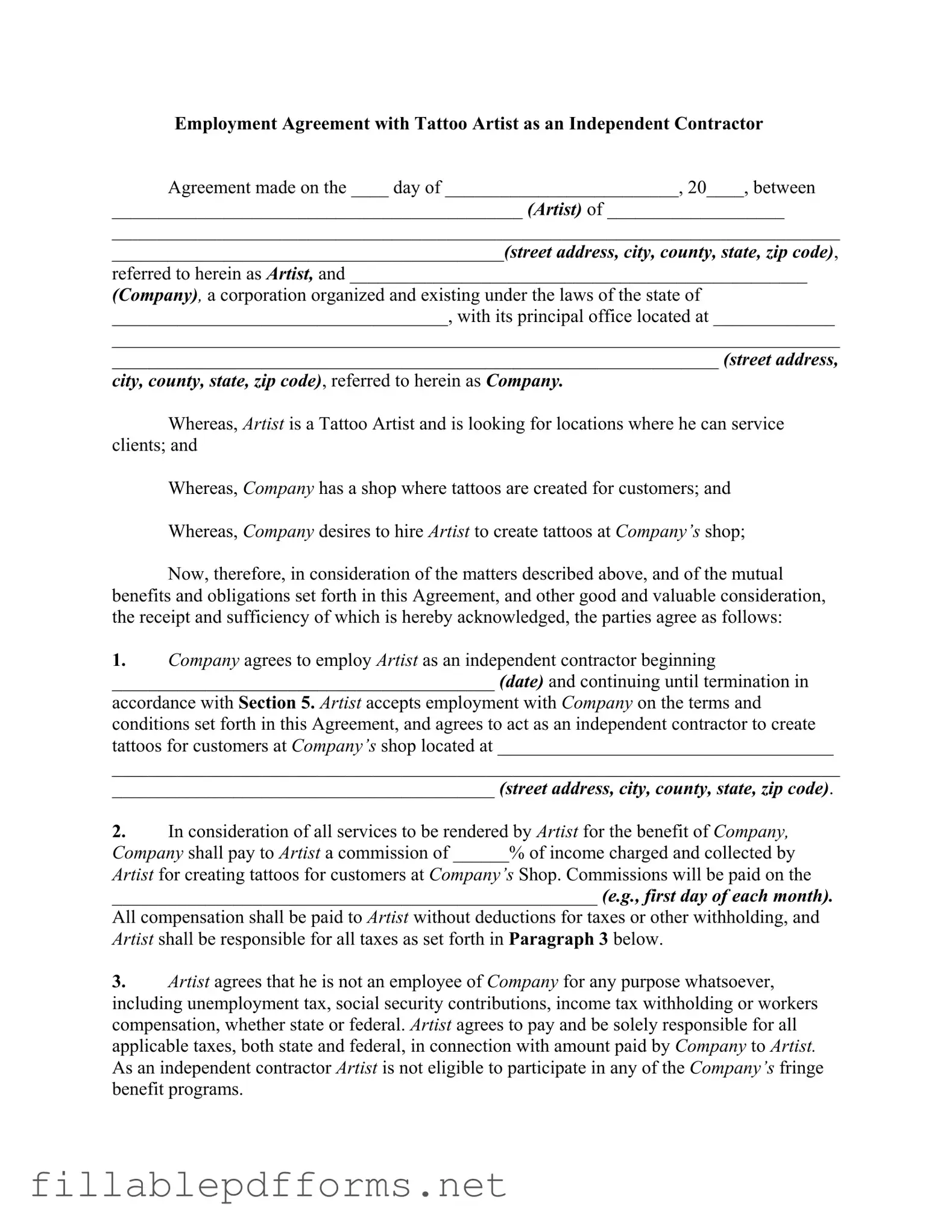The Tattoo Shop Artist Agreement form is an essential document that outlines the relationship between a tattoo artist and a tattoo shop. This agreement establishes the artist as an independent contractor, detailing the terms of employment and the nature of the work to be performed. It specifies the commission structure, indicating the percentage of income that the artist will receive for their services. Additionally, the form clarifies that the artist is responsible for their own taxes and expenses, ensuring that both parties understand their financial obligations. The agreement also includes provisions for termination, indemnification, and dispute resolution, which are crucial for protecting the interests of both the artist and the shop. By addressing these key aspects, the Tattoo Shop Artist Agreement promotes a clear understanding of expectations and responsibilities, fostering a professional and respectful working relationship.
